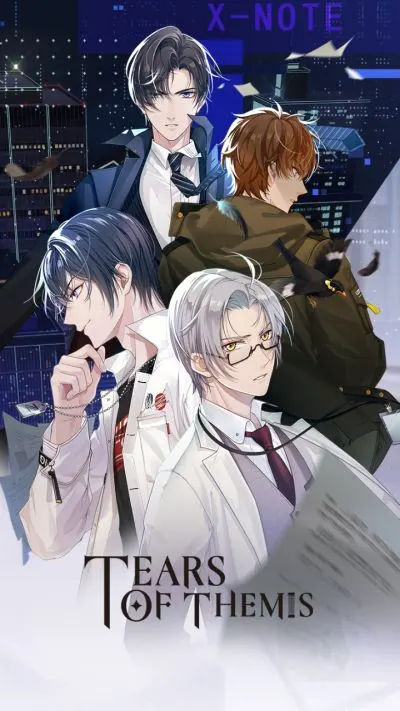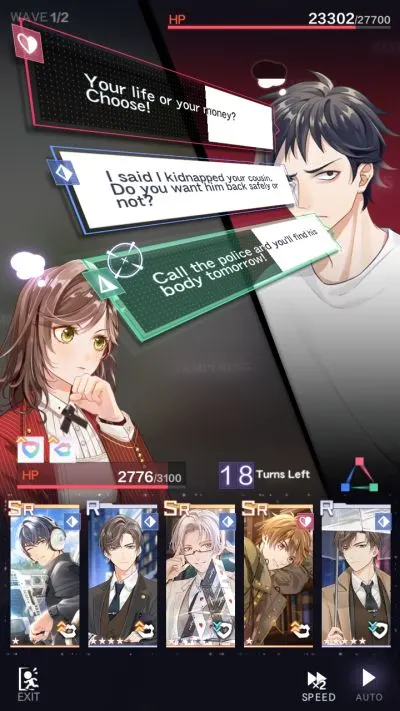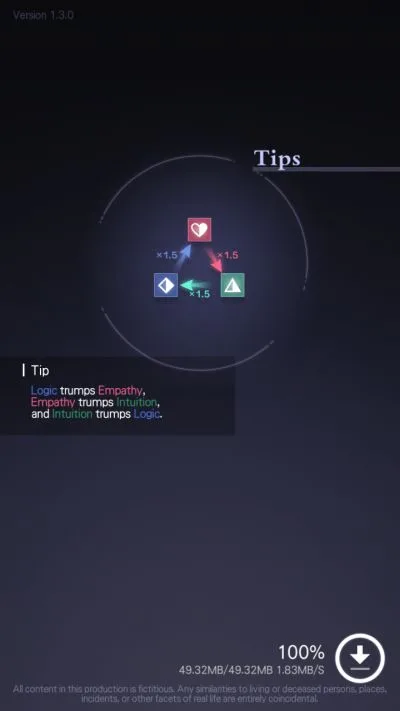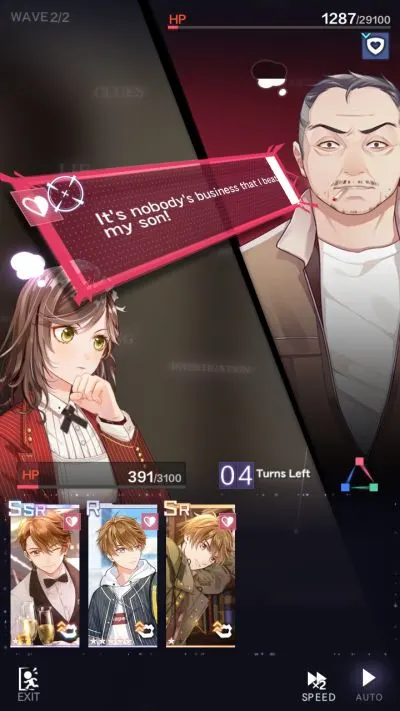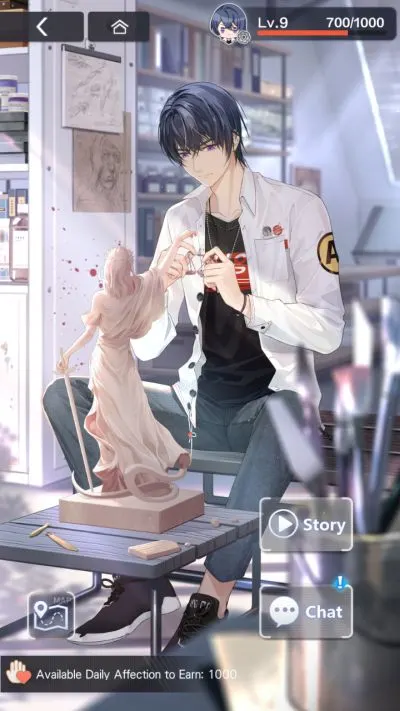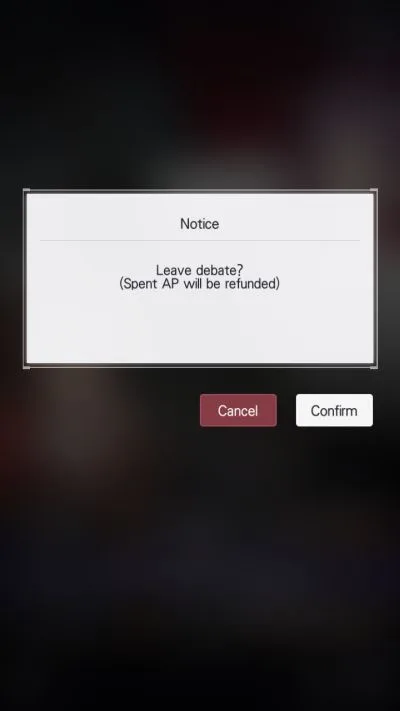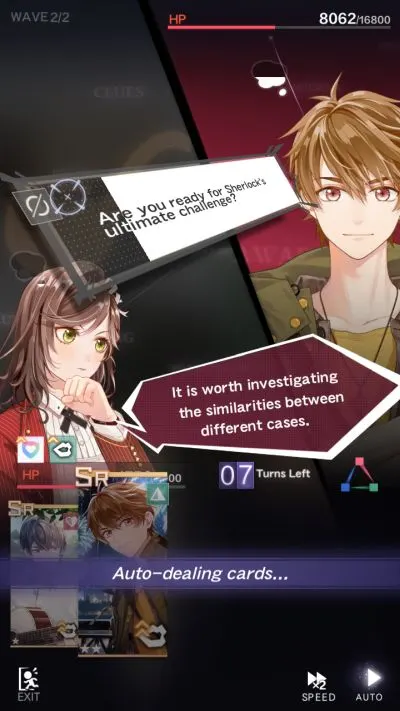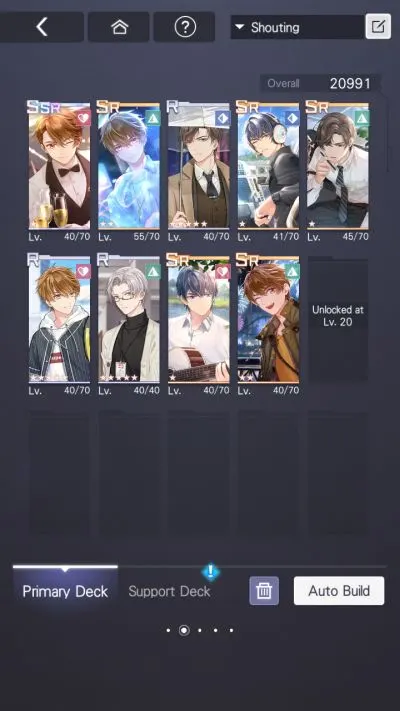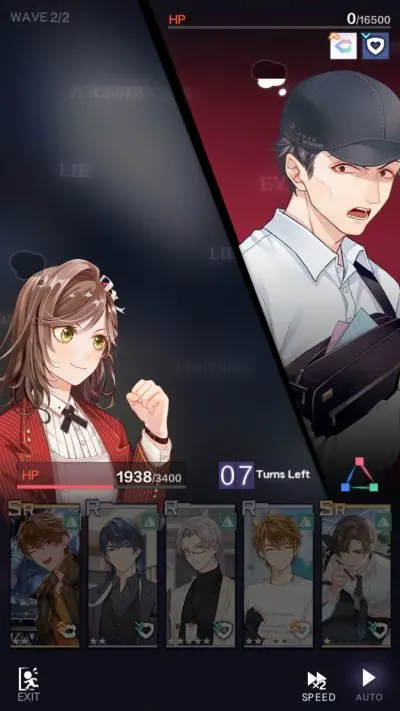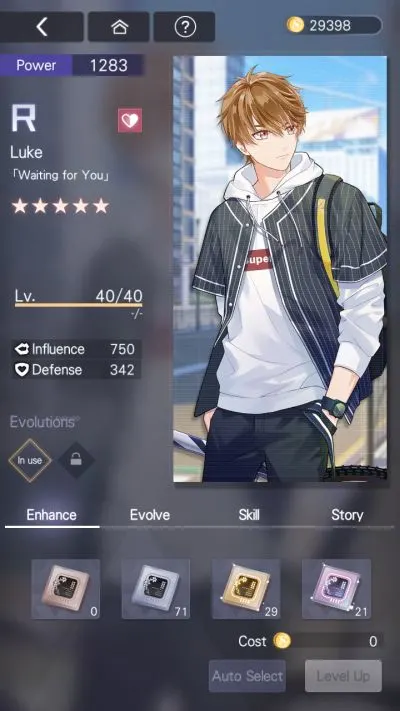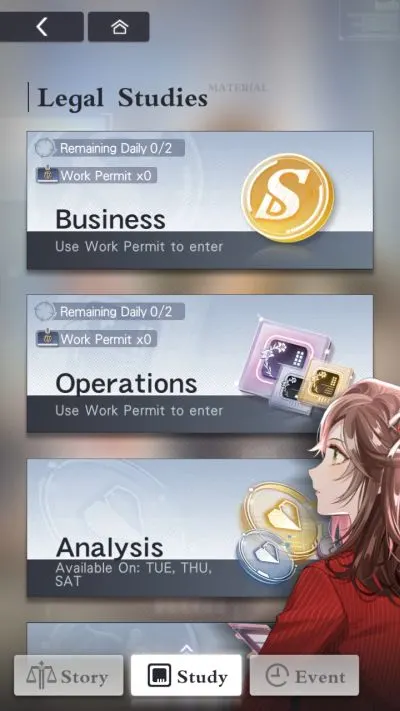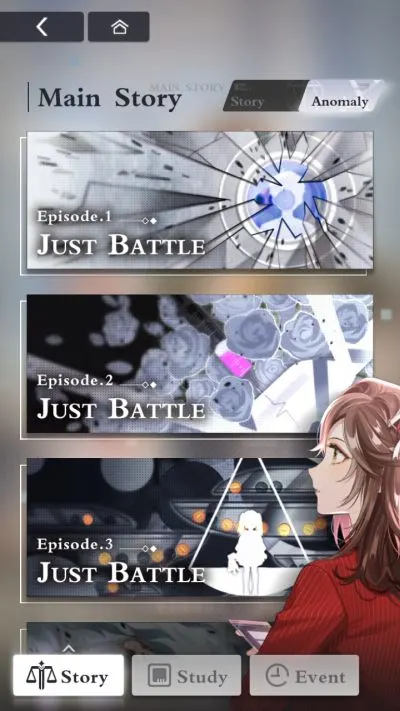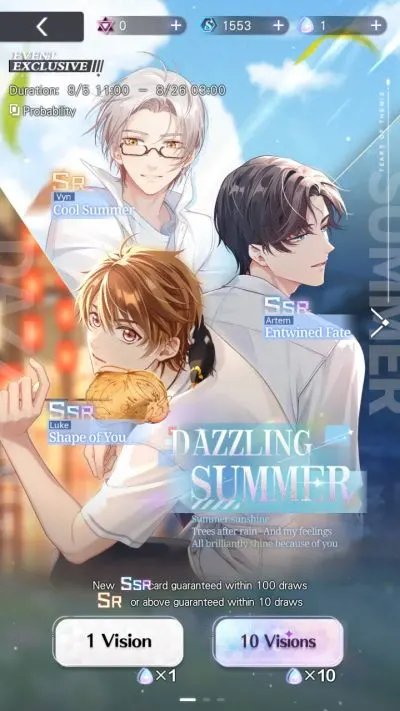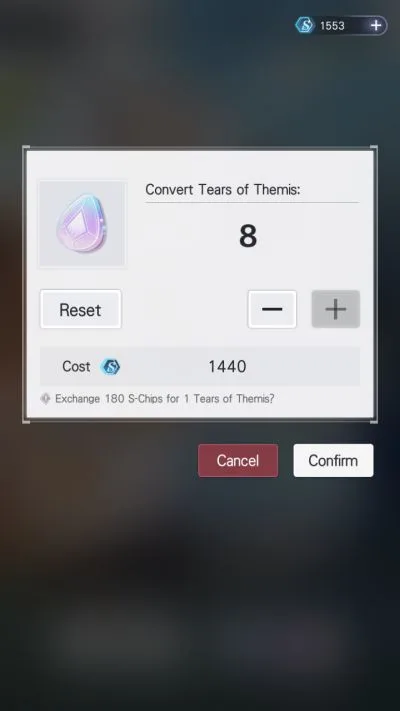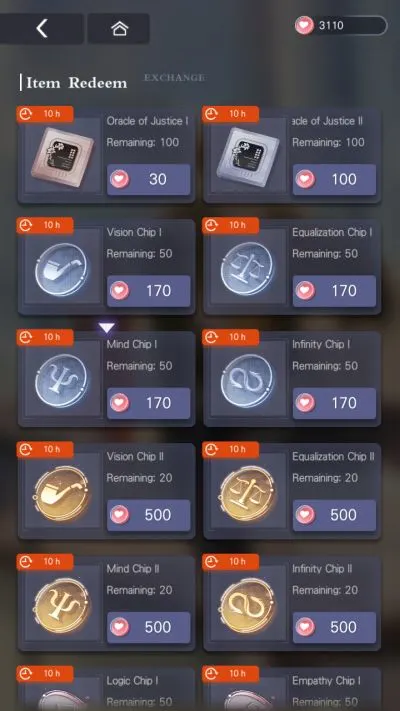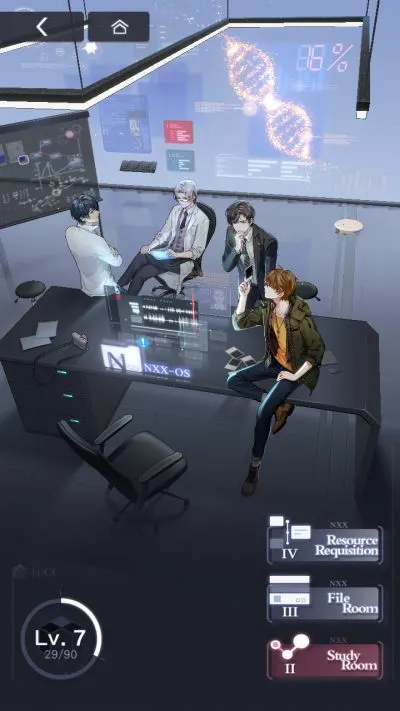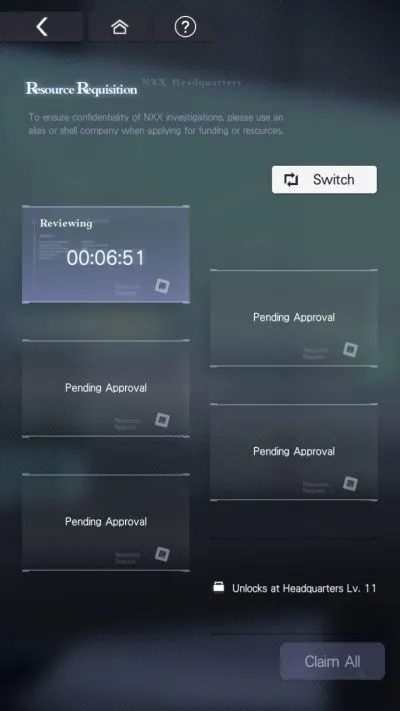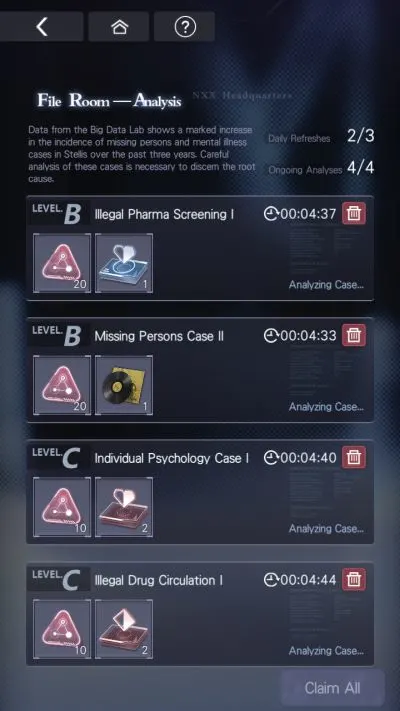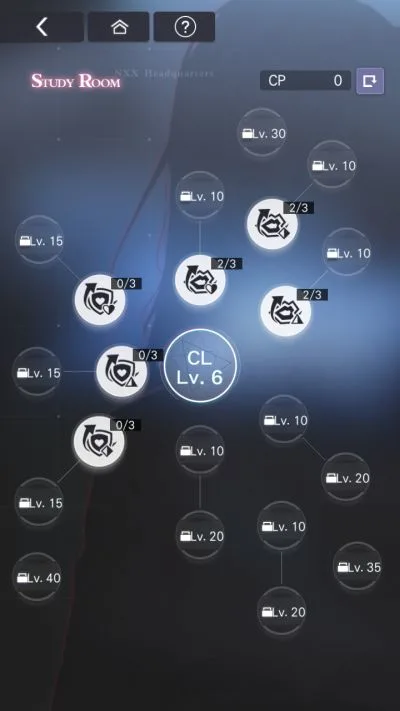Tears of Themis is a turn-based gacha card game and detective adventure made by MiHoYo, the same guys behind Genshin Impact. Gameplay-wise, you engage in “debates” where you use your cards to deplete the HP of your opponent’s arguments. While they don’t appear too often in Story Mode, the battles there are generally the toughest and the other modes have easier fights that occur more often. In Tears of Themis’ Story mode, the first thing you’ll notice is the beautiful art, commendable writing quality and that burning itch to progress the story and see what happens next.
In Tears of Themis you are an attorney working for the Themis Law Firm, named after the Greek goddess of justice. As you get cases ranging from heartbreaking stories involving food poisoning and family love to steamy, media-blitz celebrity murders and mysterious counterfeiting in the world of high art, you meet four rather dashing men: Your cheerful gadget-nerd childhood buddy Luke Pearce who is now a private-eye. Your stern but wise Themis law firm superior and veteran lawyer Artem Wing.
A quietly gentle but cynical psychiatrist named Dr. Vyn Richter. And finally Marius von Hagen, president of the Pax Corporation and a rich aspiring artist as genuinely loveable as his grin is maliciously smug and punch-worthy. These men will join you through your adventures across Stellis City, helping you solve cases and bring criminals before the scales of Themis.
The gameplay outside the card debate fights is generally there mostly for your immersion, with interrogations and clue hunting being something you can brute-force your way through since you get no penalties for making mistakes in those sections. Not to mention they are helpfully marked as being previously used or tried so you won’t make the same mistake twice.
While they’re a welcome addition, there isn’t really much to them difficulty-wise other than to keep a sharp eye and press the Inference Button and Magnifying Glass button when available. Most of this Tears of Themis beginner’s guide will focus on the debate battles and how to make your cards stronger.
In addition, we hope that with the help of our Tears of Themis guide you will be able to protect the innocent in Stellis City’s court, and reveal the the true miscreants in every case you enter.
1. MIND, HEART, GUT
The “combat” system of the game involves debating with a rock paper scissors mechanic, using cards with pictures of the four handsome heartthrobs you meet in the game. There are three types of cards, and three types of arguments: Logic, Empathy and Intuition. Logic (marked by a blue diamond) coldly and systematically sees past Empathy, Empathy (marked by a pink heart) can put doubt in someone’s Intuition, and Intuition (marked by a green triangle) can lead you to common-sense conclusions that Logic might fail to notice.
Here are some tips to take advantage of the rock-paper-scissors and to help you figure out what goals to set when establishing a deck.
Overkill Scolding Is Bad Manners
In Tears of Themis the first round of a debate usually consists of arguments with low HP. The game also tells you beforehand what kind of argument your opponent’s final, strongest one will be. You’ll also often find yourself needing at least two colors in your deck, and early on you will be forced to bring cards you might not want to bring since not all your cards might be leveled up. You have to make use of your turns and cards efficiently, so keep an eye on how much damage your cards do.
If your target argument is almost dead, rock paper scissors goes straight the window in favor of using your weaker slot-filler cards to finish them off. This way, you save your good cards for the boss argument at the end, which usually has enough HP that you don’t want to waste turns using those slot-fillers on them.
Sunset Dating
In Visit Stories, you will be limited to using cards with images of a certain character, like Luke cards for Luke’s Visit Story or Marius cards for Marius’ Visit Story. This means you’ll need cards of every color related to a character before you can even start doing them. Other than that, they’re pretty normal and don’t have notable rewards other than the common 1st-win S-chips that most other battles give you.
These should be last on your priority to do as a beginner, since while they aren’t any easier or harder to do stat-wise, your ability to do them is entirely reliant on your gacha luck! Do them if you have spare energy and are stuck at something, and just want to play through your favorite man’s story for fun.
Save Scumming? Nah, That’s Called Recon!
Debates in the Story Mode usually have a fixed layout. That means you can memorize what kind of debates they are and what order they appear in, whether they’re Logic, Empathy or Intuition. If they pick 2 Logic arguments and an Intuition argument during a round, it will be the same even after you quit, and isn’t randomized.
You can go into a debate, try to reach the final argument, and if you find that you’re not gonna make the turn limit or are running low on HP, you can simply leave the debate and come back later. Your AP is refunded, the debate starts from the beginning, and you can tailor your Story deck to completely ruin that one particular opponent. Sometimes, it takes just one very specific, normally out-of-place card in your deck to beat your opponent.
Shouting Match
Grey arguments have no strengths, or weaknesses. They’re no problem if they’re alone, like they always are in Operations and Business Study missions. For those, you just shout them down with your loudest, fanciest SSRs or whatever happens to be your most overfed card set and turn on Auto to make it go faster.
If they’re mixed in with colored arguments though, they immediately make your Auto button a liability, since the Auto AI is stupid and will use whatever happens to be the strongest card in your deck to try and kill them, even if you need it for a much more dangerous colored argument it happens to counter.
Since you can pick which Arguments to target in a group, make sure you target the Grey arguments last, or at least use your deck filler cards on it first, like that overfed yet currently useless Empathy card you brought because you didn’t have enough Intuition and Logic cards to fill your slots, in spite of all the other enemy arguments being Logic-based.
Deck Slots: Use Them!
You have five available slots for deck builds for a reason. Different kinds of missions require different kinds of decks.
For Story and Anomaly missions, you should have one shared slot that’s meant to be modified depending on the situation, which you’ll usually find out easily since AP costs are refunded for failed fights.
For Study missions, make a stat-hammer shouting deck with focus on raw card power, with balanced (Have 6 slots? Pick 2 of each color) color distribution as your next priority, as Study missions often come with a grey argument as the final one. They also often have all three colors in their first round, unless they’re Business and Operations Study Missions.
You’ve got three slots left, and you can use those to make decks specifically for hard-countering a single color. Say a deck specifically to beat down Logic-based boss arguments, consisting mainly of Intuition Cards and a few Logic Cards in case of any Empathy arguments popping out.
Use these decks to debate enemies who use only two colors at most or those with very weak initial arguments and very strong boss arguments, as you will have cards that are at least neutral versus any unexpected colors backing up your opponent’s main arguments.
2. HOW TO MAKE YOUR VOICE LOUDER
There are many different ways to power up your cards in Tears of Themis. It is important you do so, because no matter how well you line up your rock paper scissors, enemies will eventually get strong enough to simply shout down your arguments. For that, not only do you need good rock-paper-scissors work, you need to shout louder than they do!
In Tears of Themis the main stats for your cards is Influence and Defense. Influence is your card’s damage power. In an argument you must carry yourself in a convincing manner, no matter how factually correct your arguments are. Defense lessens the overall damage you take from your enemies arguing against you. After all, you must have an iron will if you don’t want others to sway your opinion, whether it be by misrepresenting facts, twisting your words, or by screaming in your ear.
There is an order in which you should prioritize powering up your cards, and it is Level, Evolution Level, Star Level then Skill Level. Here is how you go about doing all of that as a free player.
Oracles of Justice, Card Levels, And The Many Ways to Get Them
Dragging your cards to level 40 is going to be your first priority when powering them up. Thankfully, there are many ways to get what you need to do this. Most missions have Oracles of Justice as a potential reward, so you’ll get quite a lot of them as you grind. You shouldn’t be stingy with them either, as while it’s tempting to wait until you get an SSR to start dumping them on, you’re generally better off having a diverse set of cards ready for combat immediately.
Most of the time, whether a card is a fancy, sparkly, well-animated SSR or merely a well drawn static R, the rock paper scissors’ 1.5x damage bonus means you’re going to defeat enemy arguments in roughly the same number of hits given equally leveled cards, barring some really unlucky times where the opponent’s argument is left with an absolutely tiny sliver of health.
One of the best ways to get Oracles of Justice is to check the Events tab in your X-Note missions menu. Events often give some way to get more Oracles, whether it be the highly AP-efficient Trials of Themis (Trials Of Themis fights cost a measely 5 AP for 6 Oracle IIs if you pick them, compared to most missions which cost 10-15 AP and reward to get 5 Oracle IIs mixed with other rewards) or the dice-rolling Summer Breeze event, which sells high-level Oracles and low-level Oracles in bulk. These events are time limited though, so make the most of them while they’re around.
Levelling your cards is the most basic, bread-and-butter important upgrade you can give them. Not only do you make them stronger in both Defense and Influence (ATK in any other game), you unlock stories related to the image on the card you can watch! Reading these stories gives you Intimacy Points related to the character on the card, which allow you to unlock more of their Visit story missions.
Evolution Coins and Legal Studies
The Legal Studies section’s first two sections are daily debates in which you can get Oracles of Justice and Stellin twice a day, normally consisting of a single high- HP grey argument. It’s a given that you do these, but the main things you’ll be doing in the Legal Studies section are the missions below them that have no daily limit: Psychology which gives out Intuition Chips, Crisis which gives out Logic Chips, Analysis for Empathy Chips.
There are also missions marked Reasoning which gives out Luke’s Vision Chips, Clients which give out Marius’ Infinity Chips, Case Studies which give out Artem’s Equalization chips, and PsyT which give out Vyn’s Mind chips.
These chips are used to evolve their respective cards, which increases their maximum level. You need to reach a card’s maximum level to evolve it, so this is your priority after levelling your cards to 40. This is especially important for SSR and SR Cards, since they get more evolutions.
Not to mention some of their card stories are locked past level 40, so if you want to see a card’s whole story, you’ll really need to evolve them. Just keep in mind that while these missions don’t have a daily limit, they only appear during certain days of the week
Anomalous Skills
Each card comes with Skills which activate either when used to attack, or simply by being in your deck. Such skills include boosting your own Influence power for using certain card colors, lowering your opponent’s defense against certain cards, or increasing your defense against your opponent’s harsh words. Your primary method of upgrading them is through Anomaly missions.
Anomaly missions are a repeat of the debates you find in Story missions, except replace the story with various rewards, of note being Skill Levelling materials like Luke’s camera lens. Levelling card skills is usually the hardest thing to do due to the random nature of Skill Levelling material drop rates, though Anomalies also come with S-Chips as first completion rewards like most other levels.
Finish them one at a time and don’t go for the multi Auto-Debates, so you make the most of your limited AP. Do the multiple Auto-Debates only after you’ve already unlocked the NXX Headquarters and gotten stuck on an Anomaly mission. It’s not only a long grind compared to other strengthening options, but also for the fact Skill Leveling also requires other materials from the NXX Headquarters. Not to mention the stat boosts from leveling cards are generally more consequential.
3. LEGAL EXPENDITURES
Legal work in this world is an expensive affair, and you’ll have to spend your money wisely. Ostensibly, Stellins are the primary currency since it’s equal to, say, common coins in most other games. Truth be told though, you don’t have much agency on where to spend them since they get spent on very common services such as upgrading cards.
The currency you’ll really need to keep an eye on are S-Chips (which can be spent on AP, which is the game’s equivalent to Energy, and the Visions card gacha) and Friendship Coins (Which you get from making friends and sending Friendship Points to them, for which you receive them back). Friendship Coins in particular can get you out of being stuck at a level if you rack up enough of them.
S-Chips Make Themis Cry
S-Chips are the main currency you’ll be using as a free player. You can use them for AP refills, or for the card gacha by buying Tears of Themis (The gacha item, not the whole game!). Since the card gacha has a pretty predictable pity system (an SR for every 10 rolls and an SSR for every 100 total rolls), this is where you should ideally use these little blue shinies.
Whenever you get a duplicate of a card, you can use it to raise a card’s star level, boosting its power and defense, much like leveling up does. This is far more reliable for starring cards up compared to grinding shards via missions, since missions only give out shards in the single digits for the AP you spend on them. On the other hand, a dupe card is an instant 100 shards, enough to get one star right then and there.
Tears of Themis limits you to spending 200 S-Chips a day for AP refills, adding up to 600 total AP. Each individual 60 AP refill is a measely 20 S-Chips. If you really need extra Oracles of Justice or Evolution Chips, it’s usually worth it to spend some for the grind.
Friends With Benefits
One good reason to accept every friend request heading your way is to get Friendship coins. You get these by sending and receiving Friendship coins (You don’t lose coins doing this, in fact you gain 10 coins) to friends, who will send you back Friendship coins too (Receiving coins gets you 20, on top of the 10 you already sent them, making a total of 30 per friend!).
The best way to spend them is on LvII Oracles of Justice, since by the time you’ve leveled a bunch of cards to 40, you’ll likely have Evolution Chips to spare on evolving them from your grinding sessions. That being said, if you have that one card you really want to evolve right now and you can’t wait for the card’s Study Mission day, go nuts and buy what you need.
4. NXX HEADQUARTERS DAILY SUPPLY DELIVERIES
The NXX Headquarters is an upgrade hub you unlock a few chapters into the game. On top of its database which allows you to read on elements of the stories you’ve been in, it’s there basically to act as a form of daily reward system, where you can wait a few hours for your cards to gather upgrade materials. Even the starter upgrades here are no joke, especially considering defeats often happen a hair’s breadth from victory. Here are its parts.
Resource Requisition
Resource Requisition is your daily source of either Oracles of Justice or Stellin, or both depending on which you choose in it’s Switch menu. Choosing only one material means you don’t use up Requisition slots on the other material. Every 5 hours, you get a shipment of whatever you ordered, and this piles up over time until all your Requisition slots are filled.
Usually, you’ll have a lot of these waiting by the start of the next day. It’s usually better to ask for Oracles of Justice since those are much harder to get than Stellin, especially early on when you’re trying to make a good varied group of lv40 cards before you’re able to evolve them. Later on though, you’ll need to start getting Stellin from it too as leveling becomes more expensive.
File Room
The File Room is akin to Azur Lane’s Commission function, where you send out your cards to gather materials to upgrade the NXX Study Room along with card evolution materials like Artem’s pen or Card Skill Impressions. Unlike Azur Lane’s Commissions though where shipgirls doing them cannot be sent to combat, cards in the File Room can still be used for debates, and stronger cards are more likely to get extra rewards.
Don’t hesitate to put your favorite cards in here, as you’ll still be able to use them to sue peoples’ butts off. Just make sure you send them out on the best File Analysis trips, which you can tell by looking at their grades, ranging from C to S.
Study Room
The Study Room (Not to be confused with the Legal Studies mission sets) is akin to Talent trees in MMOs, where you have nodes with upgrades for your character. The only one you use the pink triangles from the File Room for is the center Confidence Level node, which upgrades your HP and gives you CP (Confidence Points) to upgrade the other nodes with.
The upgrades in the Study Room are strong enough to get you out of say, being stuck at a tough debate since the Influence boosts start at 4% at lv1, almost as strong as a card skill while also being permanently active. This adds up to kills since debates are usually lost with the enemy’s final argument very nearly dead.
If you feel your CP was spent wrong, you can dump 20000 Stellin into it to reset your upgrade choices. As common as Stellin is, this still isn’t worth using recklessly since your Stellin expenditure increases slowly but noticeably throughout the game.
In the end, it really boils down to powering up your cards and using them wisely. You always have to keep an eye on how many turns it might take you to defeat an argument, and make sure to minimize it as much as possible so neither the turn count or the enemy’s counterarguments beat you.
And this is wraps up our Tears of Themis beginner’s guide. Don’t hesitate to add your own tips or tricks to the comment section below, and just remember that this is not actual legal advice!

